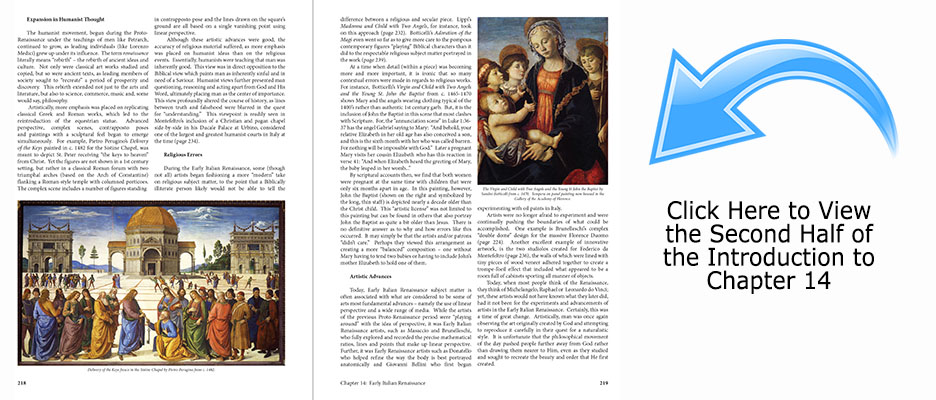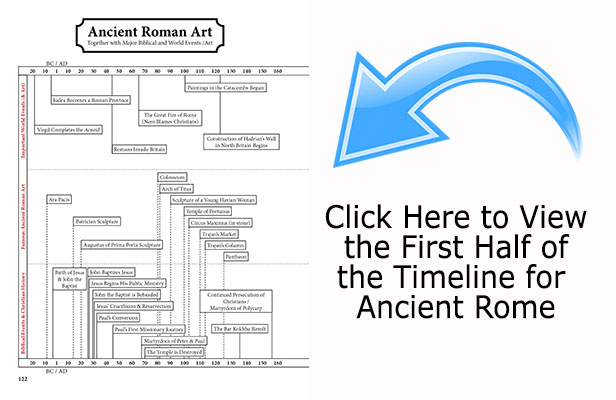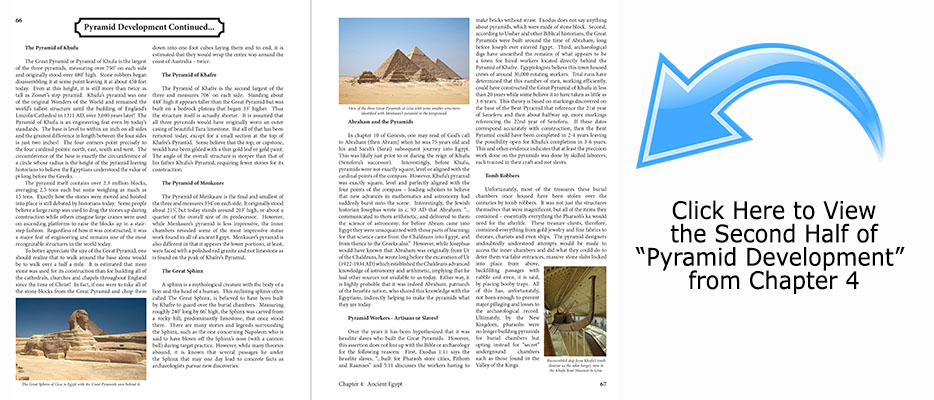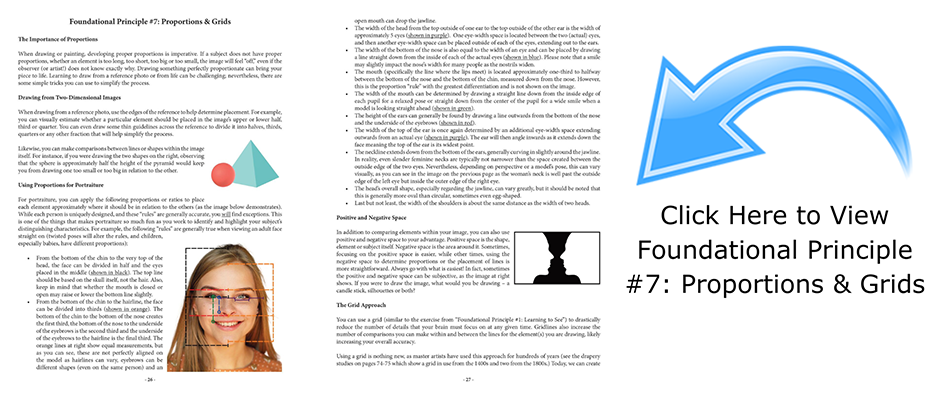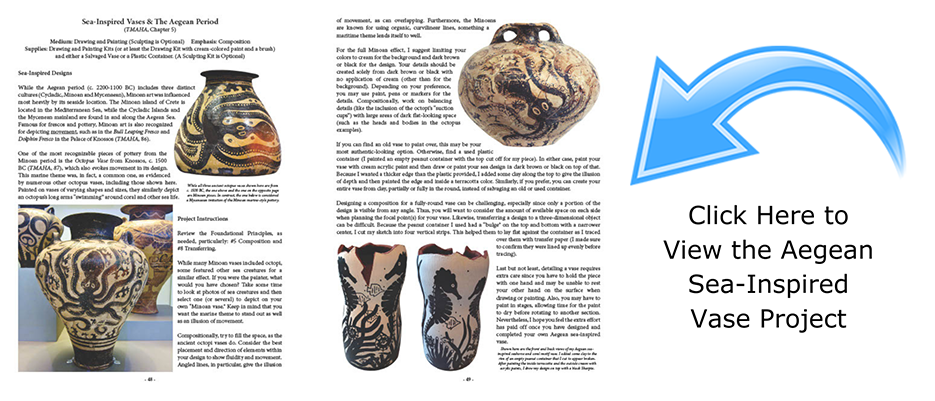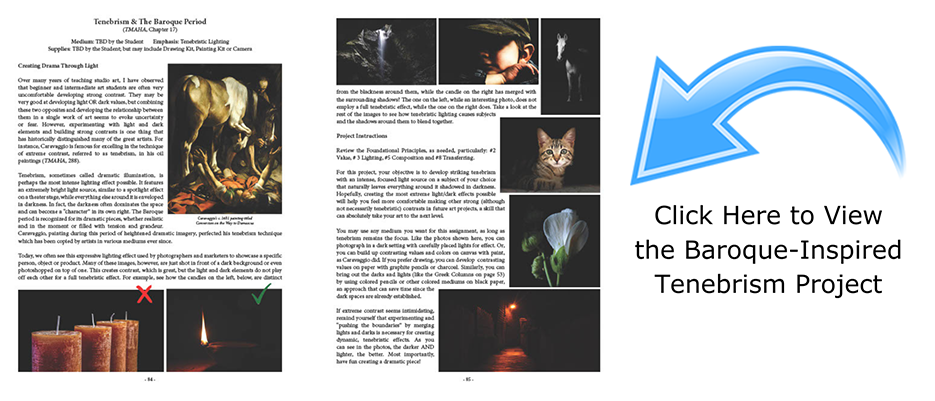For sample pages from the Art History curriculum, click Here
For sample pages from the Studio Art course, click Here
Art History
Sample Pages for Art History
The Master and His Apprentices: Art History from a Christian Perspective is a ground-breaking curriculum. Thus, we sometimes receive questions like:
- Do you only cover Christian artists?
- How do you cover secular artwork from a Christian perspective?
- What do the worksheets look like?
To answer these questions, we have collected a number of sample pages from the textbook and teacher guide. Overall, The Master and His Apprentices is based on the belief that God exists, that He created the world as outlined in Scripture, and that His Word is inherently true — even the parts we do not fully comprehend.
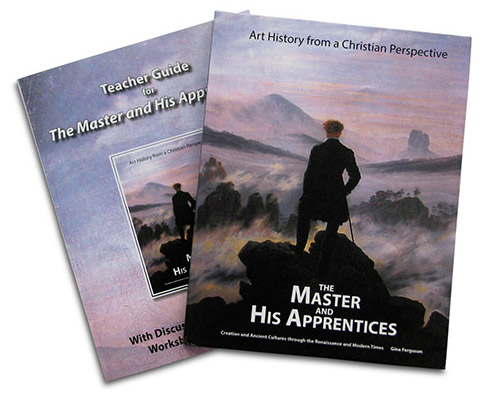
Please view the sample pages to see how the curriculum ties the artwork together with a Christian worldview through FOUR parts:
Part 1 – Chapter Introductions
The chapter introductions are vital as they provide context for the artwork. This section not only highlights the changes in art and the artist’s station but also, depending on the period, covers political, social, economic, religious, geographical, scientific, or philosophical connections. Furthermore, this is where the biblical timeline or major events in Christianity are discussed. And how these impacted the art of the time. (A list of periods covered can be found here.)
[The above sample is from the second half of the introduction for “Chapter 14: Early Italian Renaissance,” which discusses the rise in humanistic thinking and religious errors in art during the 1400s.]
Part 2 – Timelines
Following each chapter introduction is a 2-page timeline. These parallel art from the period with Christian/biblical events, general world events, and art from other periods. Consequently, students can quickly identify the key events, people, inventions, etc. surrounding the creation of the works discussed in the chapter and how they relate to the Bible and/or Christian history.
[The above sample is from the first half of the timeline for “Chapter 8: Ancient Rome.” (A complete timeline combining all of the chapter timelines can be found in the Appendix.)]
Part 3 – Individual Works or Artists
Building on the groundwork laid in the introduction, and the further context provided in the timeline, the individual sections each highlight a specific style, work, or artist. Depending on the topic, the historical information or artistic descriptions are presented in a similar manner to standard art history textbooks. However, this is done in a family-friendly way without nudity or other objectionable material. Moreover, additional points or comparisons draw attention to the biblical timeline and/or Christian principles by offering an alternative Christian worldview to the traditional humanist perspective.
[The above sample shows the second half of “Pyramid Development” from “Chapter 4: Ancient Egypt” — an example of how a specific work is described and then further tied into the biblical timeline based on an earlier development of the “traditional” versus “revised” chronologies for ancient Egypt in the introduction.]
Part 4 – Worksheets from the Teacher Guide
The teacher guide outlines how parents and classroom teachers can use the material to create a full-credit course. This includes worksheets, exams, essay assignments, etc. In most cases, students will read a half chapter per week and then complete a written or oral worksheet.
[The above sample shows the first half of the worksheet for Week 6, which covers pages 64-79 of “Chapter 4: Ancient Egypt.” You can see how some of the questions correspond to the above-mentioned “Pyramid Development” sample.]
Art History Conclusion
Of course, there is a lot more to the curriculum than these few samples can show. However, these should provide you with a good overview of what to expect. As always, please let us know if you have any questions or check out some of the curriculum’s many reviews. We are praying that this resource will be a real blessing for your family and/or school!
Studio Art
Sample Pages for Studio Art
Studio Art: Inspired by Art History can teach YOU the necessary artistic principles and technical skills needed to create eye-catching art!
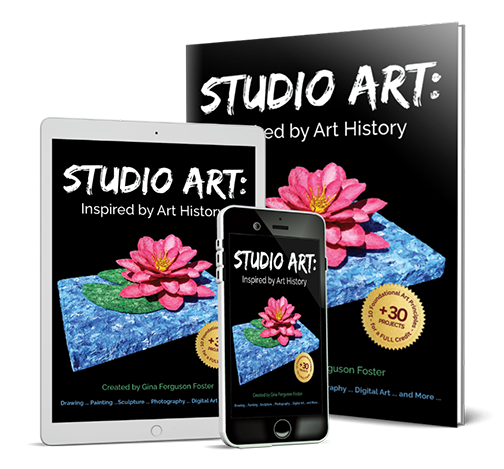
Please view the sample pages to see how Studio Art: Inspired by Art History provides a solid understanding of art through TWO parts:
Part 1 – Foundational Principles
Historically, great artists rose to prominence because they considered and perfected their application of the following principles when designing and executing their works:
- Learning to See (Line Drawing)
- Value
- Lighting
- Texture
- Composition
- Perspective
- Proportions & Grids
- Transferring
- Color
- Sculpture (3D Form)
In this course, each foundational principle covers college-level concepts in an easy-to-read layout. One or more exercises are included with each principle so students can immediately apply the concepts they have just learned. This way, students develop their technical skills in each vital area separately before combining them in the projects section.
[The above sample is from Foundational Principle #7: Proportions & Grids which shows how to compare objects when drawing, apply proportional “rules” for portraiture, use gridlines to ensure accurate proportions (including for increasing and decreasing size), and use “troubleshooting” tricks to help determine if and where proportional errors may have occurred.]
Please Note: Foundational Principles are not a one-and-done exercise. Students are encouraged to continually reference the foundational principles as they work on their projects to ensure they are implementing the best techniques and approaches. Moreover, students should FIRST complete all 10 foundational principles BEFORE moving on to the art projects for the greatest possible success.
Part 2 – Art Projects
30 unique projects introduce students to a wide variety of artistic mediums and styles. Each is based on a specific art period, style, or artist. As long as students utilize the concepts learned in the foundational principles, they are given as much artistic freedom as possible to customize their works based on personal interests and skill levels.
The projects cover an incredible span of options in both 2D and 3D mediums. Therefore, it is hard to pick just one or two samples that do justice to the broad range of mediums and styles offered. Nevertheless, the following projects show how the foundational principles are merged with art history. You can also see how project instructions encourage students to research, plan, and/or experiment to create a personalized work of art (in a creative, budget-friendly way).
[The above sample shows how students can build on the composition principles discussed in “Foundational Principle #5: Composition.” First, Aegean octopus vases are viewed and discussed, and then students work on developing their own sea-inspired composition. Once complete, this composition is painted on a 3D object. This can be an “upcycled” vase, clay molded vase, or empty plastic container.]
[The above sample shows how students can build on the lighting principles discussed in “Foundational Principle #3: Lighting.” First, extreme lighting techniques used by Baroque painters like Caravaggio are discussed. Then, students experiment and work on developing their own tenebristic piece, which can be done through photography, drawing, or painting.]
Studio Art Conclusion
Of course, there is a lot more to the curriculum than these few samples can show. However, these should provide you with a good overview of what to expect. As always, please let us know if you have any questions. You can also learn more about this art history curriculum on our homeschool and Christian school pages.
Ready to begin incorporating some art and art history?
Art History Textbook
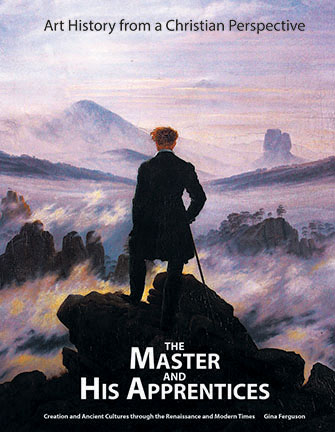
Retail: $149.99
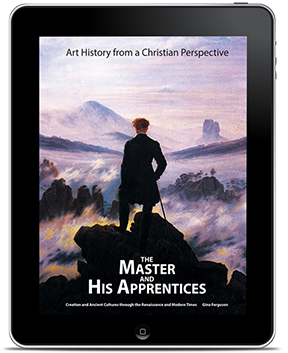
Retail: $34.99
Art History Teacher Guide
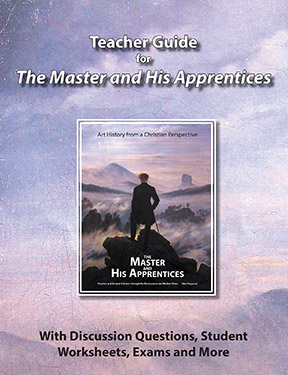
Retail: $24.99
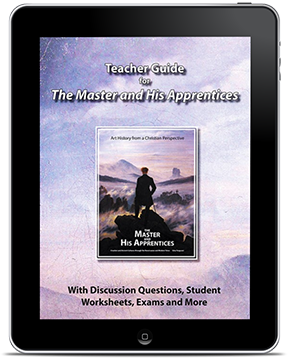
Retail: $19.99
Studio Art Curriculum
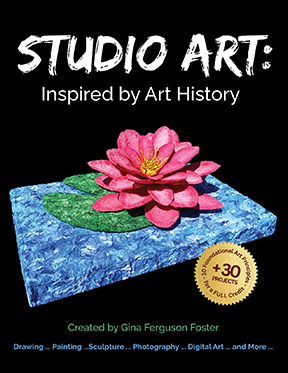
Retail: $49.99
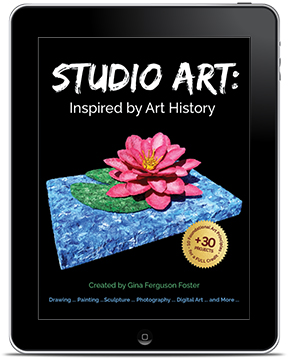
Retail: $29.99
Physical books ship FREE via Media Mail to all 50 US States, or you can choose Priority Mail for a flat $8. International buyers may purchase physical books through Christianbook.com or RainbowResource.com, as we cannot process international shipping at this time. Nevertheless, digital products are available for everyone worldwide!
Please help us spread the word about The Master and His Apprentices…
